Cyperus is a hygrophilous tropical plant of the sedge family. It is often grown indoors, and in nature it can be found in Africa and on the island of Madagascar in marshy places and along the banks of water bodies. On single upright stems are thick umbrellas made of long, narrow and flat leaves. The plant blooms with small and unremarkable yellowish inflorescences.
Material Content:
Tsiperus (Cyperus, Syt): types and varieties
At home, a plant can reach 3 to 4 m in height, and at home it rarely grows more than 1.5 m.
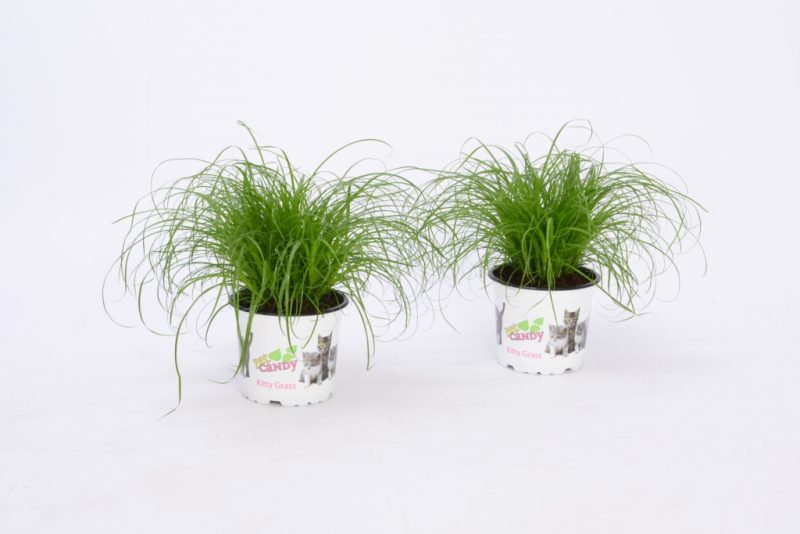
In nature, there are more than 6 hundred different types of cyperus, but few have taken root in room culture.
The most common types:
- Tsiperus sprawling. The maximum height is 60 cm. It forms a lush, compact and sprawling dark green bush.
- Cyperus is another leaf. It can grow up to 1.5 m. The leaves are narrow and long. In conditions comfortable for him, it can even bloom. Breeders bred several varieties of this herbaceous perennial with variegated leaves.
- Cyperus papyrus. Demanding enough care. It grows up to 2 m. It has thick fleshy stems and thin leaves that resemble thick and lush panicles in shape.
- Cyperus Helfer. Most often used to design aquariums. Thick panicles of long, soft leaves in the water look very impressive.
The nuances of growing cyperus
This plant is very unpretentious, the main thing is that the soil is always moist. For this reason, it is even recommended to put the pot with the plant in another container filled with water so that the flower receives a sufficient amount of moisture.

No need to be afraid of waterlogging, this is a marsh plant and does not threaten root decay.
Tsiperus or syt, as it is also called, prefers to grow in a well-lit place, but easily adapts to partial shade. The optimum temperature varies from +18 to +25 degrees. With a significant decrease in temperature, the growth and development of the plant slows down. Too low temperatures in combination with high humidity can cause root decay.
In summer, the flower feels great on the street under the shade of trees. Scorching midday rays can scorch leaves, and they turn yellow or fall. Cyperus can be used to decorate a pond, partially lowering it into water or dipping it in the ground.
Propagation of a houseplant
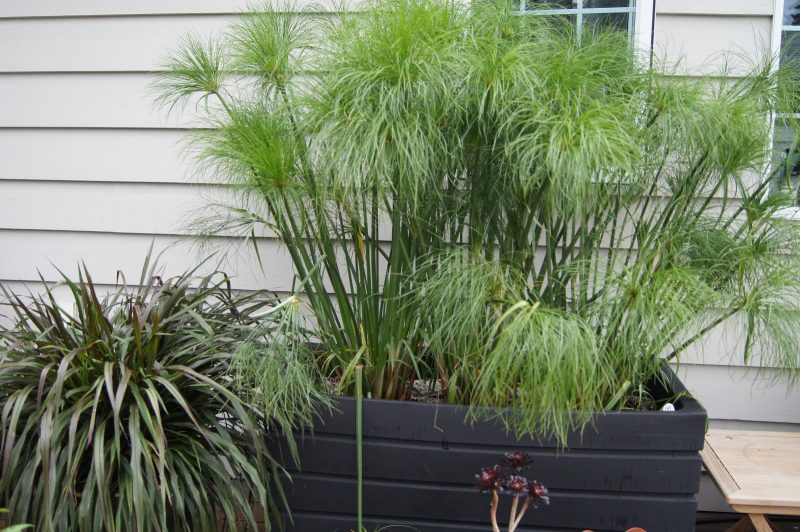
There are several ways to propagate a cyperus flower:
- apical cuttings:
- seeds;
- dividing the bush.
The overgrown bush during transplantation can be divided into several parts and each transplanted into a new container. Old bushes give a lot of basal processes, each of which has a full root and is capable of independent life.
Reproduction using apical cuttings has its own characteristics.
- Umbrellas are cut off, leaving about 5 - 6 cm of the stem, and they are lowered “head down” into a container of water or wet sand.
- After about 12 to 14 days, white roots appear at the base of the umbrella, after which the cyperus is transplanted into a new pot.
- Soon, the stalk that has taken comes gives young green shoots.
There is a simpler way. You can simply tilt one of the stems into a jar of water and fix it. When the roots appear at the base of the umbrella, the stem is cut, and the seedling is transplanted into another pot.
It is also possible to propagate with seeds, collecting them yourself or buying in a store. They are sown in a prepared box with a substrate of peat and sand and covered with glass. The soil should be moist and not dry out. Watering seedlings need only warm water.
Home Care
Since syt loves high humidity, it must often be sprayed from the spray gun. This is especially true of the heating period, when the air in the apartments is very dry. The soil should not dry out, so the flower is often kept partially submerged in water.
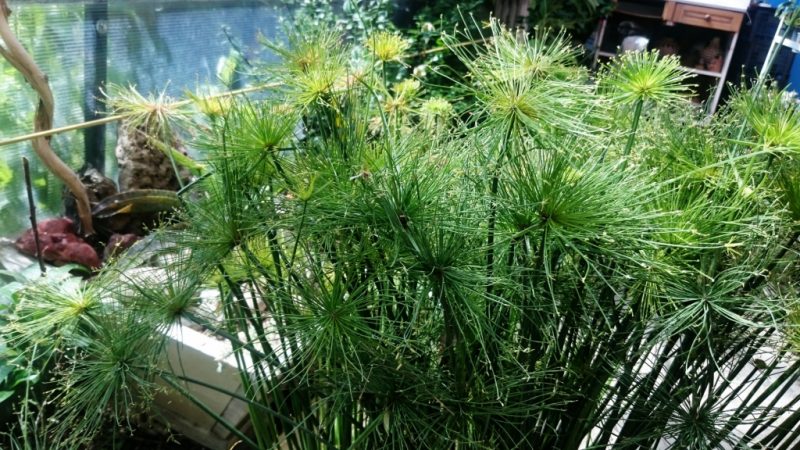
If there is an aquarium in the house, it is better to put cyperus near it.
In spring and summer, the plant needs to be fed every 2 weeks with conventional fertilizers for indoor flowers. In winter, 1 feeding a month is enough.
Cyperus transplant and soil selection
Since the plant grows very quickly, it is advisable to transplant the plant annually so that it does not lose its decorative appearance. If the cyperus is not transplanted for a long time, the stems will turn yellow and the number of leaves will be reduced. It is better to transplant in the spring, in March, while the new pot should not be much larger than the previous one.
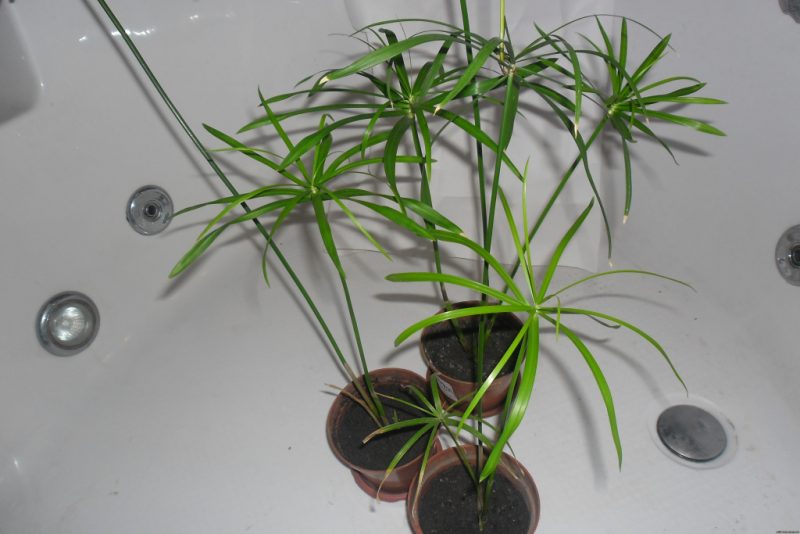
The transplant is carried out by transshipment, carefully removing an earthen lump wrapped in rhizome from an old pot. Cleaning the old land is not necessary.
The soil for transplantation can be prepared independently, taking 1 part of clay-turf and leafy soil, sand and 2 parts of peat. Some gardeners recommend adding a little swamp sludge. Since cyperus grows well on flooded soils, it does not need drainage. This crop can also be grown hydroponically.
Pest and Disease Control
Cyperus potato rarely suffers from pests. Sometimes, due to excessive air dryness, a spider mite may appear on the leaves.
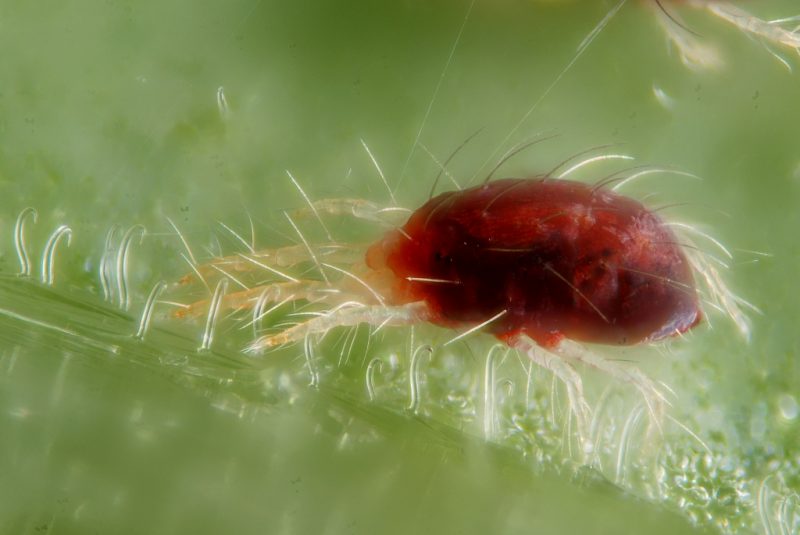
Dry air can also cause the tips of the leaves to dry out. To prevent this, the plant must be sprayed frequently and regularly.
If the leaves become too light and discolored, this indicates that Cyperus grows too fast and lacks nutrients. The plant urgently needs to be fed.
Signs and superstitions, the use of cyperus
It is believed that this plant improves the emotional background in the house by absorbing negative energy.In addition, he is able to develop a craving for knowledge, cheer up and deal with depression.
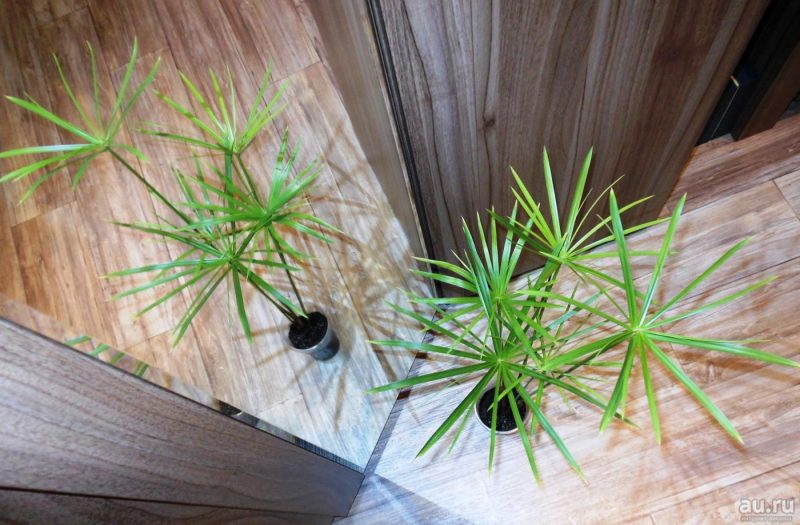
It is often recommended to put cyperus in the bedroom. It destroys harmful microbes, purifies the air, normalizes sleep, and soothes the nervous system. Therefore, the best plants for people suffering from sleep disorders can not be found.
Tsiperus is a beautiful and unpretentious houseplant. Providing him a minimum of comfortable conditions, you can constantly admire the abundance of lush tropical greenery in the house.












